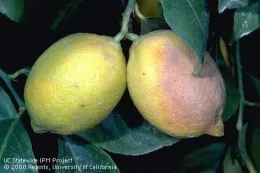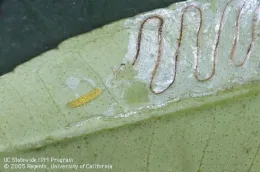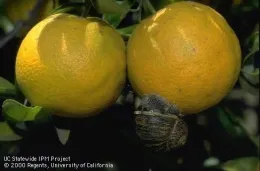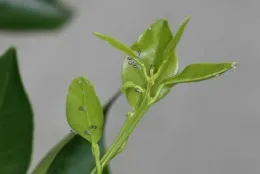
Citrus trees need care throughout the year, including cultural practices to keep trees healthy and pest management. During the fall season, several pests can attack citrus trees in many California regions.
Brown Rot
Monitor for this disease by checking for damaged fruit on your tree, as well as fruit in storage. Sometimes affected fruit develops a pungent odor and can ruin fruit held in storage. See the UC IPM web page on Brown Rot to learn more.

If you see what look like small “tunnels” on your citrus tree leaves, your tree might have citrus leafminer. The adult stage of this pest is a small, light colored moth; the larval stage feeds and develops inside the leaves of young citrus and other closely related plants.
Citrus leafminer rarely causes problems for mature trees, however, it can seriously damage very young trees. Read the UC IPM Pest Notes: Citrus Leafminer for recommendations for prevention or management.
Snails and Slugs

Asian Citrus Psyllid and Huanglongbing
You may have heard of the Asian citrus psyllid (ACP) and the deadly disease huanglongbing (also called citrus greening) that has been featured in the news. This disease doesn't pose a threat to humans or animals, but is deadly to citrus trees. Once a tree develops huanglongbing, there is no cure, so for this disease prevention is key.

UC IPM Web Site
For information on managing other citrus pests in the garden, see the UC IPM webpage on Pests in Gardens and Landscapes: Citrus.

